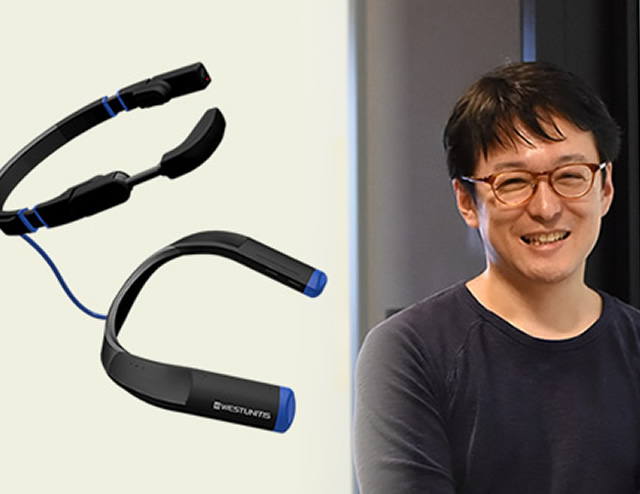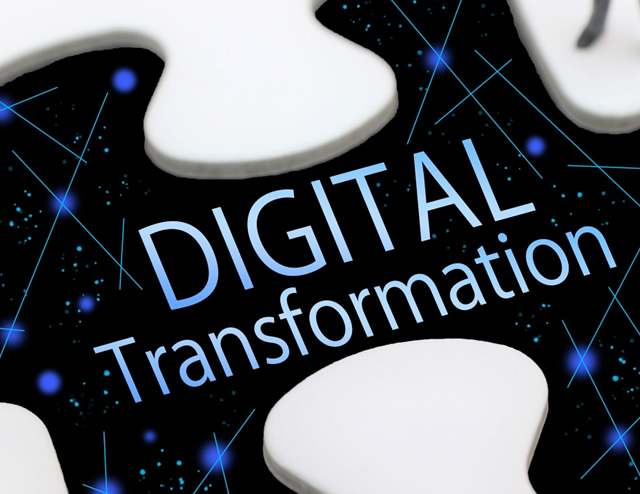Highlights
Thoughts on the Digital Transformation of SMEs during and post COVID-19 Era
It has long been said that the future is unpredictable in our world, but the 2020 outbreak of COVID-19 has accelerated this trend, forcing all companies to change.
This is where DX (digital transformation) comes in.
What can be done to accelerate DX for small and medium businesses (SMEs) during and post COVID-19 era?

DX for superior digital customer experience
As represented by telework, or working from home, the infectious COVID-19 virus has fundamentally changed how we work, communicate, the way we think, and how we share it with others. At the same time, we can also say that it has become an opportunity to rethink many things including the value of our businesses, how we interact with clients, and the business process, among others.
This is why we want to accelerate DX (digital transformation). I think there are many companies that have been told that DX is necessary, but the integration has been slow and have never made any real progress.
According to the “Guidelines for Promoting Digital Transformation” released by the Ministry of Economy, Trade, and Industry (METI) in December, 2018, the digital transformation has been defined as “Companies coping with extreme changes to the business environment, and using data and digital technology to change their business, organization, process, and business culture while changing their product or service and business model based on client or societal needs, and establishing predominance amongst the competition.”.
Referenced URL: https://www.meti.go.jp/press/2018/12/20181212004/20181212004.html
The key point is that DX not only introduces IT equipment and services, but also changes the business itself and leads to business results. So, what kind of digital transformation will be required in this so-called “With/After COVID-19” era?
Yutaka Iimori, CEO of Digital Surf, which hosts the Design Thinking DX (digital transformation) Course for leading mid-size companies and SMEs, says, "It's a simple question: 'How do I deliver a great customer experience digitally?'".
Before we think about what needs to be done to achieve it, let's start with why DX is not accelerating in small businesses.
Why isn't DX accelerating in SMEs?
According to the “Survey Results for Digital Transformation in the Manufacturing Sector for Small and Mid-Sized Production”, published by Information-technology Promotion Agency, Japan (IPA), digital transformation isn’t accelerated in the manufacturing sector for the following five reasons.
Referenced URL: https://www.ipa.go.jp/ikc/reports/20200720.html
1. Even before getting into the topic of DX, the conditioned "resistance to change" and "lack of a sense of crisis" barriers of mindset and corporate culture stand in the way.
2. When making changes to products or services, thinking that the provider’s perspective of “by making things that the maker views as good” will lead to competitive advantage.
3. A clear lack of understanding and awareness at the management level of digital change and insight into the use of IT.
4. Not having advanced IT or Tech staff to begin with.
5. Barriers against cooperating with other companies.
Mr. Iimori says that among these, 1 and 2 are especially critical, as they are not limited to the production industry, and are common in all industries.
“Regarding 1, the problem is fixation on the way things have always been done, and an ingrained culture that favors technology that can only be used by people with specific skills. Also, though this is one of the great things about Japanese companies, methods that emphasize detail and quality end up in opposition to digital transformation, which emphasizes speed. Also, regarding 2, it is a company creating more business or products at their own convenience, without understanding the needs of the clientele. There are very many cases like that.”
As we move forward with DX , we need a mindset that is accepting of change, and an understanding of the client’s needs is necessary.
The ‘Design Thinking’ necessary to chart the direction of a company
To say in just a few words the reasons digital transformation isn’t accelerating in SMEs, Mr. Iimori analyzes, “Is because they can’t chart the direction of their business while operating in and post COVID-19 era.”
“When looking into digital transformation, many have tendencies to suddenly want to ‘Use AI and big data’, or ‘implement Cloud and IoT’, thinking the matter with an approach of ‘how to make use of this technology’. However, that is not the correct order.”
SMEs in Japan probably have a philosophy that they have held dearly for many years.
Once again, each company needs to re-examine its corporate philosophy, which is the underlying principle of each company, and "re-question" for whom and what solutions its business can provide and what value it brings to society. On top of that, a company must consider "How can I deliver a great digital customer experience?".
"Design thinking, which is centered on human perspective”, Mr. Iimori says, is an effective way to learn and implement such an approach or mindset.
“Design Thinking is not creating business, products, or services based on the company’s perspective or convenience, but the process of thoroughly understanding the needs of the client, finding essential needs that even the clients themselves do not notice, and leading them to a solution. It is an effective approach more so than ever, at a time when we need to design for a complicated, diversified, and non-continuous future.
In this series, we will see actual cases of companies going through digital transformation, seeing what kind of a mindset, or approach, is necessary in and post COVID-19 era, and how to identify client needs. And finally, we will also be looking at talents that spur innovation and business culture that supports it.
Related Links
Contributing to Daily Record Automation with a Daily Report App using QR Codes / Sanko-Giken Corporation....
Making Touch-less Operation a Reality with Reasonably Priced Micro Gesture Sensors / A-Sum Technology, LLC....
Contributing to a Remote "Connected - Communicative Worksite" Through Wearable Computer Glass / WESTUNITIS Co., Ltd....
With a small drone and image analysis technology, Liberaware Co. Ltd. has made the work of inspecting narrow, dark, and dangerous places more efficient....
Thoughts on the Digital Transformation of SMEs during and post COVID-19 Era
It has long been said that the future is unpredictable in our world, but the 2020 outbreak of COVID-19...
The Contour of SME Management Required in the New Era
Open Innovation for Regaining SME Power in Japan(5th Article)/Prof. Kazuyuki Motohashi, The University of Tokyo
Open Innovation with Large Companies
Open Innovation for Regaining SME Power in Japan(4th Article)/Prof. Kazuyuki Motohashi, The University of Tokyo
The Role of Technological Partner within an Ecosystem
Open Innovation for Regaining SME Power in Japan(3rd Article)/Prof. Kazuyuki Motohashi, The University of Tokyo
New Business Development with Open Innovation
Open Innovation for Regaining SME Power in Japan(2nd Article)/Prof. Kazuyuki Motohashi, The University of Tokyo
Open innovation = Redefining Client Relations
Open Innovation for Regaining SME Power in Japan(1st Article)/Prof. Kazuyuki Motohashi, The University of Tokyo













